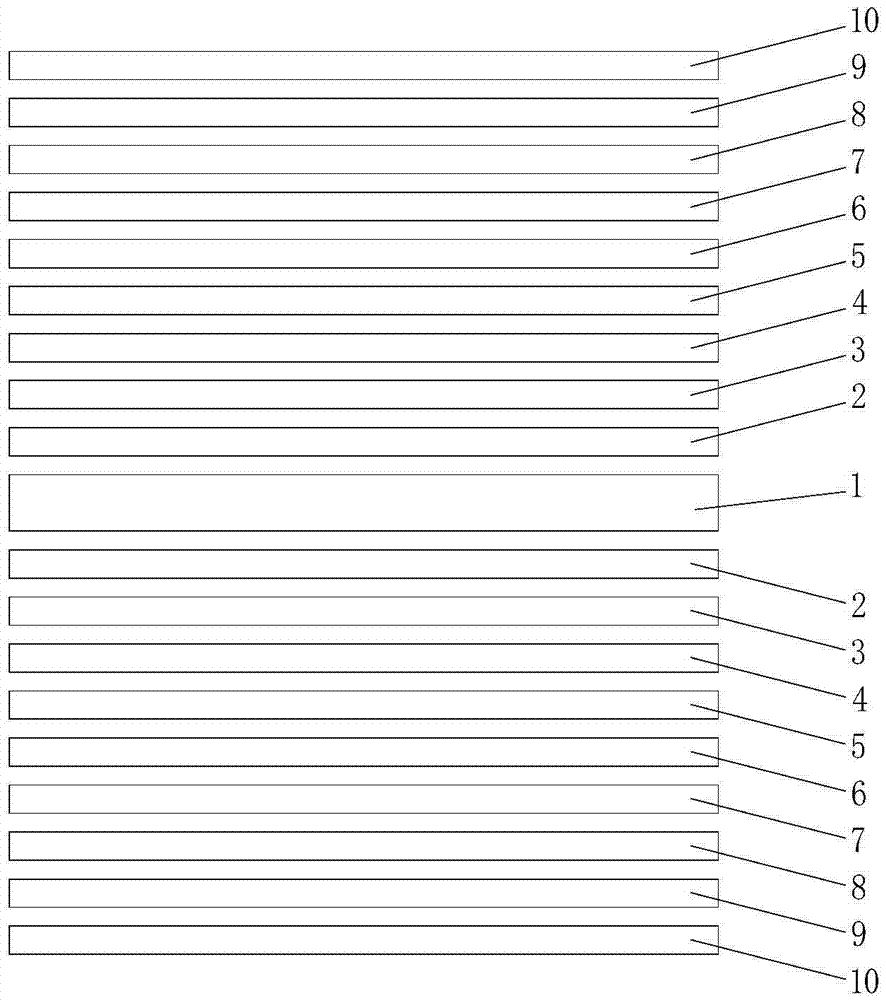Anti-reflection and wear-proof lens capable of filtering blue light and preparation method of anti-reflection and wear-proof lens
A technology for filtering blue light and lenses, applied in the field of lenses, which can solve problems such as inconvenience in life, reduction of people's sight, and danger
- Summary
- Abstract
- Description
- Claims
- Application Information
AI Technical Summary
Problems solved by technology
Method used
Image
Examples
Embodiment 1
[0072] A method for preparing anti-reflection and wear-resistant lenses for filtering blue light. When the substrate is molded by resin, the preparation method specifically includes the following steps:
[0073] 1) Clean and dry the substrate;
[0074] 2) Coating the inner and outer surfaces of the substrate respectively;
[0075] A. Coating the first film layer:
[0076] Adjust the vacuum degree in the vacuum coating chamber to less than or equal to 5.0×10 -3 Pa, and control the temperature in the vacuum coating chamber to 50-70°C, and use an electron gun to bombard the film material of the first film layer, and the film material of the first film layer evaporates and deposits on the outer surface of the substrate in the form of nano-scale molecules. Control the evaporation rate of the first film layer to be 2.5? / S, and the final thickness of the first film layer after formation is 10-100nm; wherein, the film material of the first film layer is trititanium pentoxide, formin...
Embodiment 2
[0095] A preparation method for filtering blue light anti-reflection wear-resistant lens, when the substrate is formed from glass, the preparation method specifically includes the following steps:
[0096] 1) Clean and dry the substrate;
[0097] 2) Coating the inner and outer surfaces of the substrate respectively;
[0098] A. Coating the first film layer:
[0099] Adjust the vacuum degree in the vacuum coating chamber to less than or equal to 5.0×10 -3 Pa, and control the temperature in the vacuum coating chamber to be 200-300°C, use an electron gun to bombard the film material of the first film layer, and the film material of the first film layer evaporates and deposits on the outer surface of the substrate in the form of nano-scale molecules. Control the evaporation rate of the first film layer to be 2.5? / S, and the final thickness of the first film layer after formation is 10-100nm; wherein, the film material of the first film layer is trititanium pentoxide, forming tri...
PUM
 Login to View More
Login to View More Abstract
Description
Claims
Application Information
 Login to View More
Login to View More - R&D
- Intellectual Property
- Life Sciences
- Materials
- Tech Scout
- Unparalleled Data Quality
- Higher Quality Content
- 60% Fewer Hallucinations
Browse by: Latest US Patents, China's latest patents, Technical Efficacy Thesaurus, Application Domain, Technology Topic, Popular Technical Reports.
© 2025 PatSnap. All rights reserved.Legal|Privacy policy|Modern Slavery Act Transparency Statement|Sitemap|About US| Contact US: help@patsnap.com

